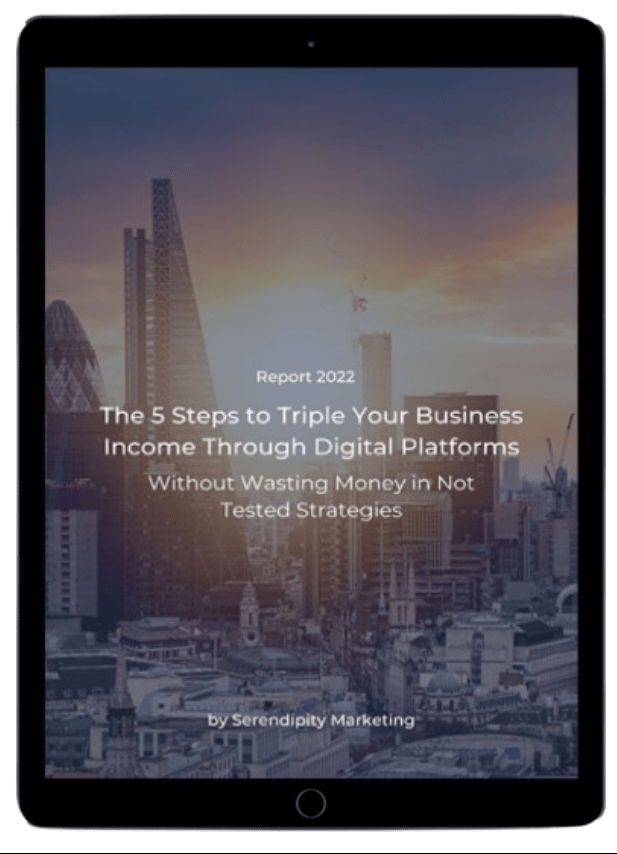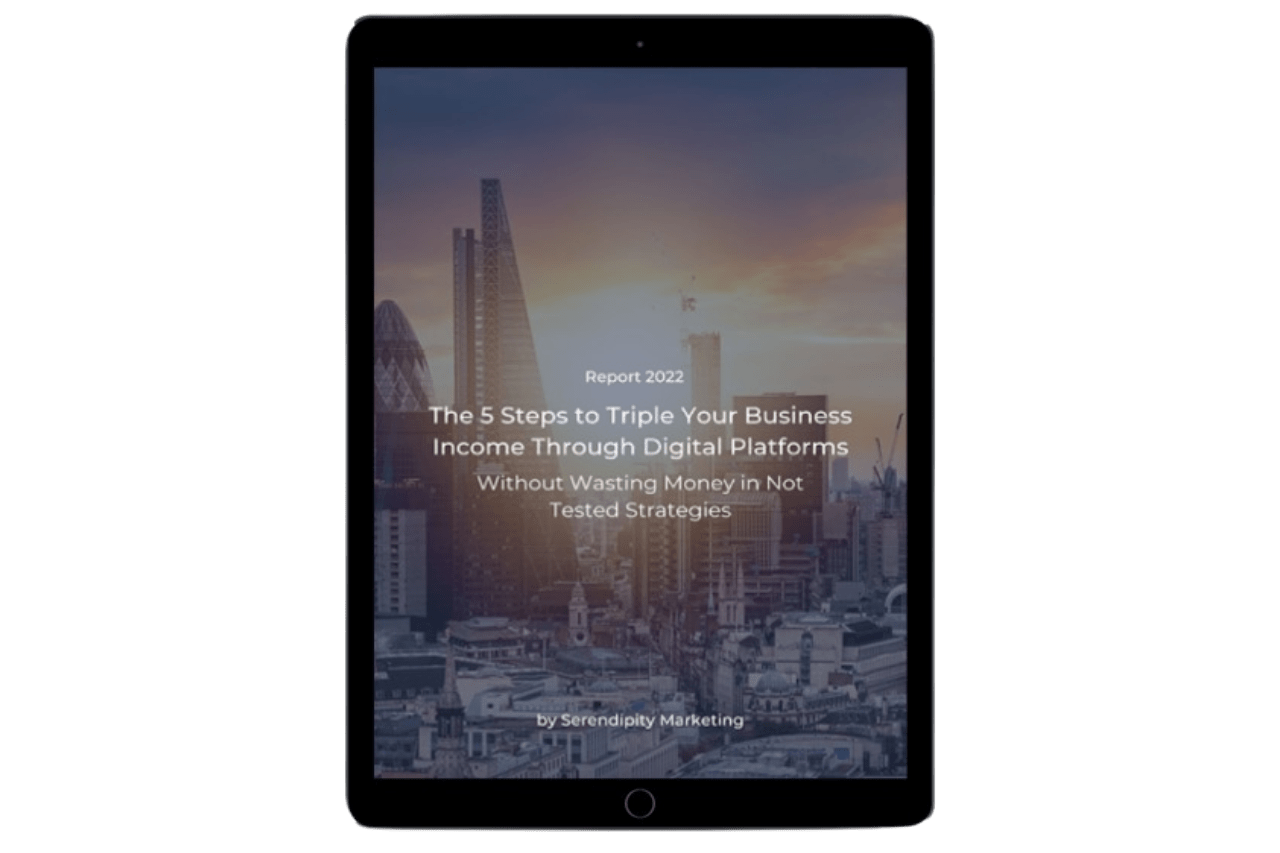Did you know that you might be doing things that are hurting your web traffic? And especially if your traffic is low, stuck, or simply not growing the way you would expect, it’s probably because of the things that we are going to break down in this article.
So, make sure you read until the end because we are going to show you these 10 things and how to remove them today.
Hi there, and welcome back to Serendipity Marketing. We're a digital marketing agency with a mission to help small businesses grow by applying psychology to their marketing strategies.
Before we get started, please go ahead and follow us on LinkedIn, Facebook, or Instagram.
So, let’s get straight to the point.
1. Forgotten no-index tax
If you ever have anything on your pages in the header, that could be responsible to tell Google not to index the page.
So, if you're wondering, why your page is not getting any traffic, it could be because you have a no-index tax.
And even if you didn't add them manually, what you'll find is a lot of the platforms out there, from WordPress to some of the eCommerce platforms, usually have a button or a checkmark that you can no-index pages.
It might be that someone on your team may have checked that box unintentionally and this is what’s hurting your web traffic.
So, just double check on the top of the pages that you think you should get traffic but you don’t, and just make sure it aligns up with what's really happening.
2. Thin content
If you write a lot of thin content, you're just not going to rank well. There are over a billion blogs on the web and Google has their prime pickings of content. They're not struggling to figure out what content they should end up ranking.
What they want to do is to rank the good stuff, adding ignore to the crap. And if you have thin content, unless your content is around images, animated GIFs, or videos, thin content isn't going to do well for you.
It doesn't mean that you need 5,000-word articles or even 2,300 or 10,000-word articles. You just need to make sure that you're covering every single aspect of the article that helps someone get what they need.
If you're not doing that, then your content is thin. It's not about length, it's about the value that you're providing.
And if you can do that in 500 words, then you're good. If you can do that in 2000 words, then you're good. And if it takes 5 or 10,000 words, that's fine as well, but the key is to be super thorough.
3. Excessive anchor text-rich links
So, years and years ago, if you wanted to rank for terms like "online marketing," you would take a lot of your other pages and just use the text "online marketing" and link to that online marketing page that you wanted to rank higher.
But if all your pages have the same anchor text for the term "online marketing" or whatever term you're trying to go after, what do you think it tells Google? "Hey, this isn't natural."
Why would every single link internally and even externally have the same anchor text? Well, it shouldn't, it needs to be natural.
Some of your anchor texts will say, "Click Here", "Learn More", they may even say other words like "Digital Marketing" which are related to online marketing.
It needs to be natural and whatever's best for the user.
Alright, now before we move on with the next thing that’s hurting your web traffic, have you ever thought about how much you should invest in marketing to generate constant business growth? Click the button below to calculate the ideal marketing budget you should allocate for higher visibility, engagement, and profit.
How much should you invest in Digital Marketing?
4. High-resolution images
High-resolution images are great, but if they're not compressed, you're not going to do well in Google Image search.
Images search can drive so much traffic, especially for industries like travel. So, if you're not leveraging that, you're missing out.
So, make sure you have high-resolution images, high in quality, but they're compressed from a file-size standpoint.
That will help with your rankings.
5. Irrelevant and intrusive popup ads
If you have popups throughout your whole site and they ruin the experience, you're not going to do as well.
On our site, we have popups and you're probably like, "Guys, but you have popups".
The thick is that if the popup provides value and they're getting more value than the intrusion effect that you're causing, you're good to go.
But if it doesn't and it's just ads and something that just ruins the experience and doesn't provide any value, you've got an issue and you may want to reconsider your popups.
Either remove them or try to provide way more value.
6. Pages with errors
Whether there are 400 errors or 500 errors, make sure you fix them.
And you can use SEO tools where you can simply type your URL in the site auto report section, and it'll point out a lot of those 400 or 500 errors that you should be aware of and fix.
You can click here to see a list of free SEO tools for higher qualified traffic.
7. Redirect loops
A lot of times you're going to remove old pages or consolidate content, and you're going to use 301 redirects. But when you do these 301 redirects, what happens with a lot of businesses is that they'll redirect one page to another, and then that page eventually they'll delete and then the redirected it back to another page or back to the original page.
So, this way you just get a 301 redirect loop and you don't want that as that's just going to hurt your web traffic.
So, anytime you do 301 redirects, make sure they're not in loops and don't do 301 redirects to URLs that are redirecting to another URL.
Just make them go straight to the last URL that you're redirecting people with, and if you have to update all your old 301 redirects, make sure you do that.
8. Orphaned pages
These are pages that don't get linked anywhere internally. You can have the most amazing piece of content, but if no one knows about it, it doesn't matter, you're not going to get any rankings from it.
So, just make sure that you're interlinking relevant pages to your amazing content. You don't want orphaned pages.
If you do that, what you'll find is that you spent all this time and money creating this content, making it so beautiful and visually appearing, and then no one ends up seeing it.
So, make sure you add the internal links. On our team, what we do is anytime we publish new content, we link to it through three other pieces of content. By doing this, we're ensuring that our new content also ranks really well.
9. Links to redirected pages
When you have internal links and those pages are redirecting, you want to fix them. Change those old internal links and link them to the right end place. Your internal links should not be going redirected.
So, anytime you add 301 redirects or 302 redirects, change up the internal links.
10. Internal broken links
This is the last one. As your site gets older, your business gets more established, you're going to have broken links. It's natural, everyone does, just make sure you clean them out once a quarter, that's what we do.
You can use free SEO tools to get a site auto report with the broken internal links your website has and just fix them.
If you need help with your SEO and digital marketing to grow your business in terms of web traffic, engagement, and profit, contact us today and speak with one of our digital marketing experts to see how we can build the bridge between the point you’re standing at right now and your goals.



